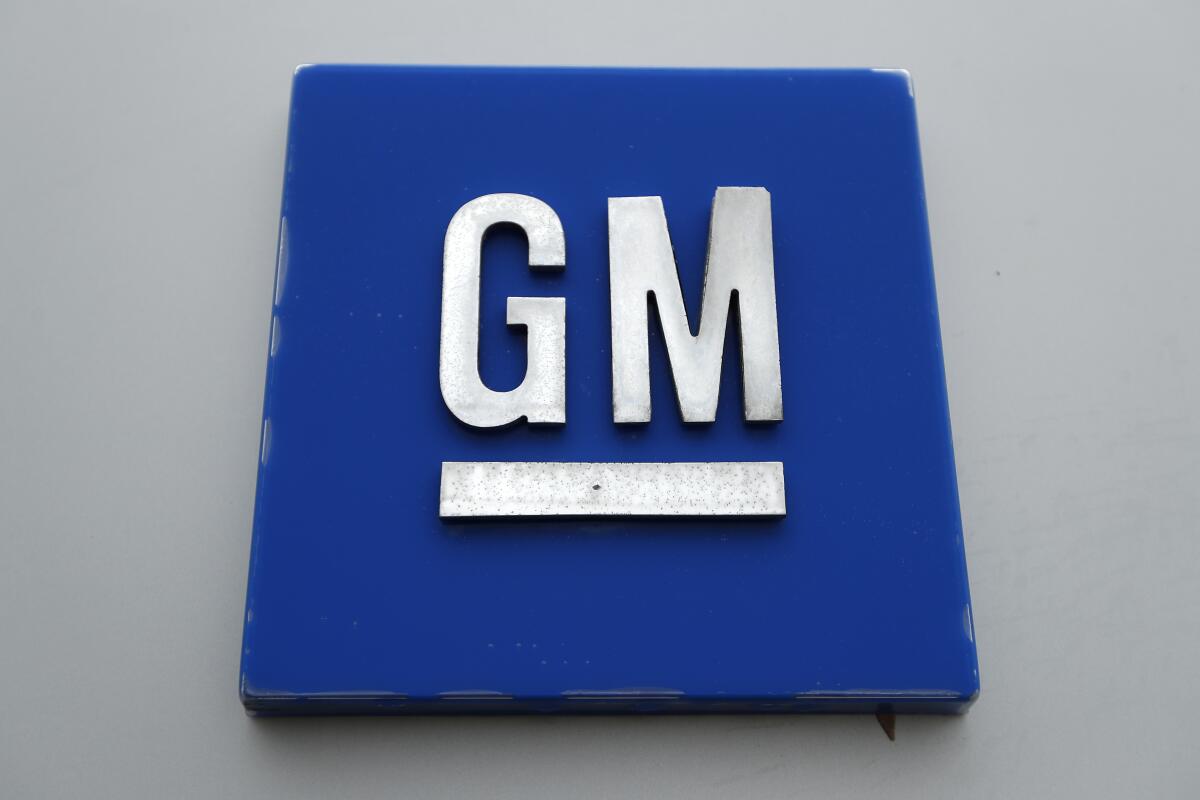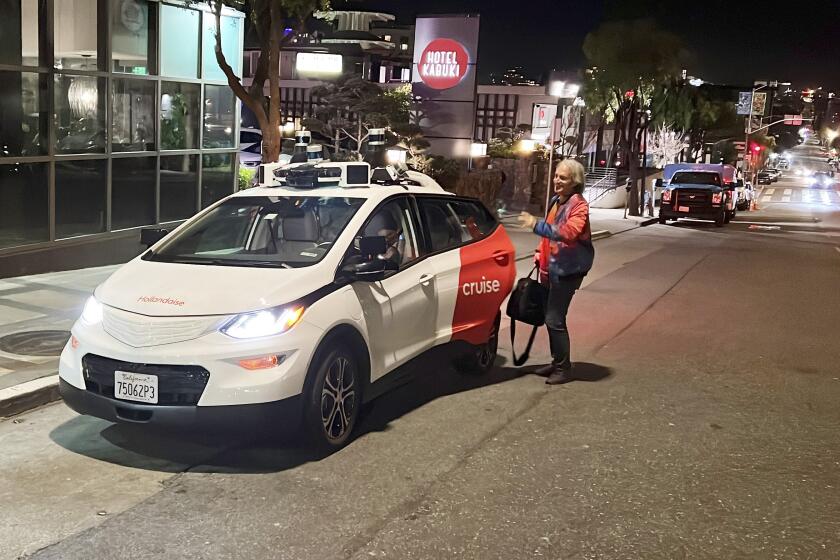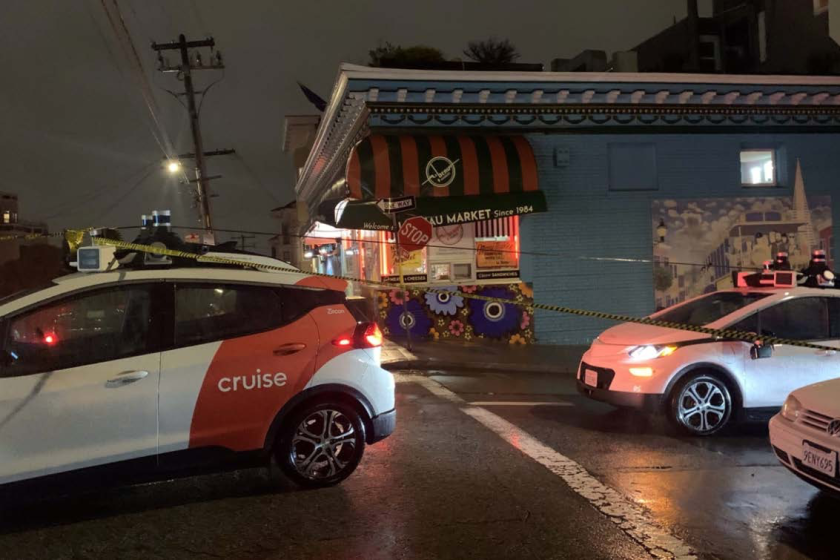General Motors recalls all Cruise robotaxis after one dragged a pedestrian

General Motors’ Cruise autonomous vehicle unit is recalling all 950 of its cars to update software after one of them dragged a pedestrian to the side of a San Francisco street in early October.
The company said in documents posted by the National Highway Traffic Safety Administration on Wednesday that with the updated software, Cruise vehicles will remain stationary should a similar incident occur in the future.
The Oct. 2 crash prompted Cruise to suspend driverless operations nationwide after California regulators found that its cars posed a danger to public safety. The state’s Department of Motor Vehicles revoked the license for Cruise, which was transporting passengers without human drivers throughout San Francisco.
In the crash, another vehicle with a person behind the wheel struck a pedestrian, sending the person into the path of a Cruise autonomous vehicle. The Cruise initially stopped but still hit the person, and then pulled to the right to get out of traffic, dragging the person about 20 feet. The pedestrian was pinned under one of the Cruise vehicle’s tires and was critically injured.
Cruise says in documents posted by NHTSA that it already has updated software in test vehicles that are being supervised by human safety drivers. The driverless fleet will get the new software before resuming operations, the company says.
In the wake of California pulling Cruise’s permit to operate robotaxis in the state over safety concerns, Cruise is suspending all U.S. operations.
In a statement Wednesday, the GM unit said that it did the recall even though it determined that a similar crash with a risk of serious injury could happen again every 10 million to 100 million miles without the update.
“We strive to continually improve and to make these events even rarer,” the statement said. “As our software continues to improve, it is likely we will file additional recalls to inform both NHTSA and the public of updates to enhance safety across our fleet.”
Cruise said that after examining its system, it has decided to add a chief safety officer, hire a law firm to review its response to the Oct. 2 crash, appoint a third-party engineering firm to find the technical cause, and adopt companywide “pillars” to focus on safety and transparency.
Problems at Cruise could slow the deployment of fully autonomous vehicles that carry passengers without human drivers. It also could bring stronger federal regulation of the vehicles, which are carrying passengers in more cities nationwide.
NHTSA opened an investigation Oct. 16 into four reports that Cruise vehicles may not exercise proper caution around pedestrians. Agency documents cited two injuries, including the Oct. 2 crash. The complaints involved vehicles operating autonomously and “encroaching on pedestrians present in or entering roadways, including pedestrian crosswalks in the proximity of the intended travel path of the vehicles,” the agency said.
California officials suspended Cruise’s permits to operate driverless vehicles in the state, citing safety concerns. General Motors’ autonomous vehicle brand had already been under investigation by federal transportation officials.
In documents filed with NHTSA, Cruise said its automated driving system was designed in some cases to pull over and out of traffic to minimize safety risks and disruption after a crash, with the response dependent on the characteristics of the crash. But in certain circumstances, such as a pedestrian on the ground in the vehicle’s path, pulling over is not the desired response.
The Cruise system “inaccurately characterized the collision as a lateral collision and commanded the AV to attempt to pull over out of traffic, pulling the individual forward rather than remaining stationary,” the company said.
While the California DMV didn’t elaborate on specific reasons for its suspension of Cruise’s license, the agency accused Cruise of misrepresenting safety information about the autonomous technology in its vehicles. The revocation followed a series of incidents that heightened concerns about the hazards and inconveniences caused by Cruise’s robotaxis.
The DMV and others have accused Cruise of not initially sharing all video footage of the accident, but the robotaxi operator pushed back — saying it disclosed the full video to state and federal officials.
General Motors Co., has ambitious goals for Cruise. The Detroit automaker had been expecting annual revenue of $1 billion from Cruise by 2025 — a big jump from the $106 million in revenue last year.
After disturbing week for Cruise robotaxis, California applies the brakes on company’s ambitious expansion plans.
GM recently paused production of the Origin, a fully autonomous vehicle designed for Cruise to carry multiple passengers. The company is expected to resume production at a Detroit-area factory once Cruise resumes autonomous ride-hailing.
More to Read
Inside the business of entertainment
The Wide Shot brings you news, analysis and insights on everything from streaming wars to production — and what it all means for the future.
You may occasionally receive promotional content from the Los Angeles Times.













